Why Customer Feedback is So Important for Your Store—And 5 Ways to Collect It

As the owner of an online store, providing a top-notch customer experience should be one of your top priorities.
This includes:
- Providing useful and valuable products that help your customers achieve their goals
- Streamlining your digital shopping experience and your customers’ path to purchase
- Offering helpful and laser-focused customer service and proactive customer support
… and much more based on your customers’ needs and expectations.
Let’s say that again.
Your aim should always be to give your customers what they want, need and expect from your brand — not just what you think they need.
The best way to make that happen? Listen to customer feedback.
In this article, we’ll dig into the best ways to collect feedback from your customers — and how to make the most of the information you uncover.
7 Key Reasons to Collect Customer Feedback
First, let’s take a closer look at why collecting customer feedback is vital to the success of your ecommerce business.
Collecting customer feedback can have both an immediate and lasting impact on a number of aspects of your business. For example, it allows you to:
1. Discover Your Customers’ Needs
Listening to your customers allows you to learn more about what they want to receive from your brand. But surprisingly, HubSpot recently found that 42% of businesses don’t collect any feedback from their customers.
Chances are, these companies aren’t fully providing for their customers’ needs — and may be missing the mark entirely. More realistically, brands that don’t collect customer feedback often take a “spaghetti-against-the-wall” approach to serving their audience. Instead of being strategic in their approach, they operate by trial-and-error — which, to be sure, is inefficient at best, ineffective at worst.
On the other hand, brands that do collect customer feedback don’t have to guess as to how to best serve their customers. Since they actually listen to what their customers have to say, they’ll be able to collect actionable insights to help keep their audience engaged and satisfied.
As an example, Shogun customer BirdRock Baby asks customers that place a second order through its ecommerce store if they would like to be highlighted on the site’s customer feature blog. For those who respond positively, they’ll receive a survey with questions about their family and shopping experience.
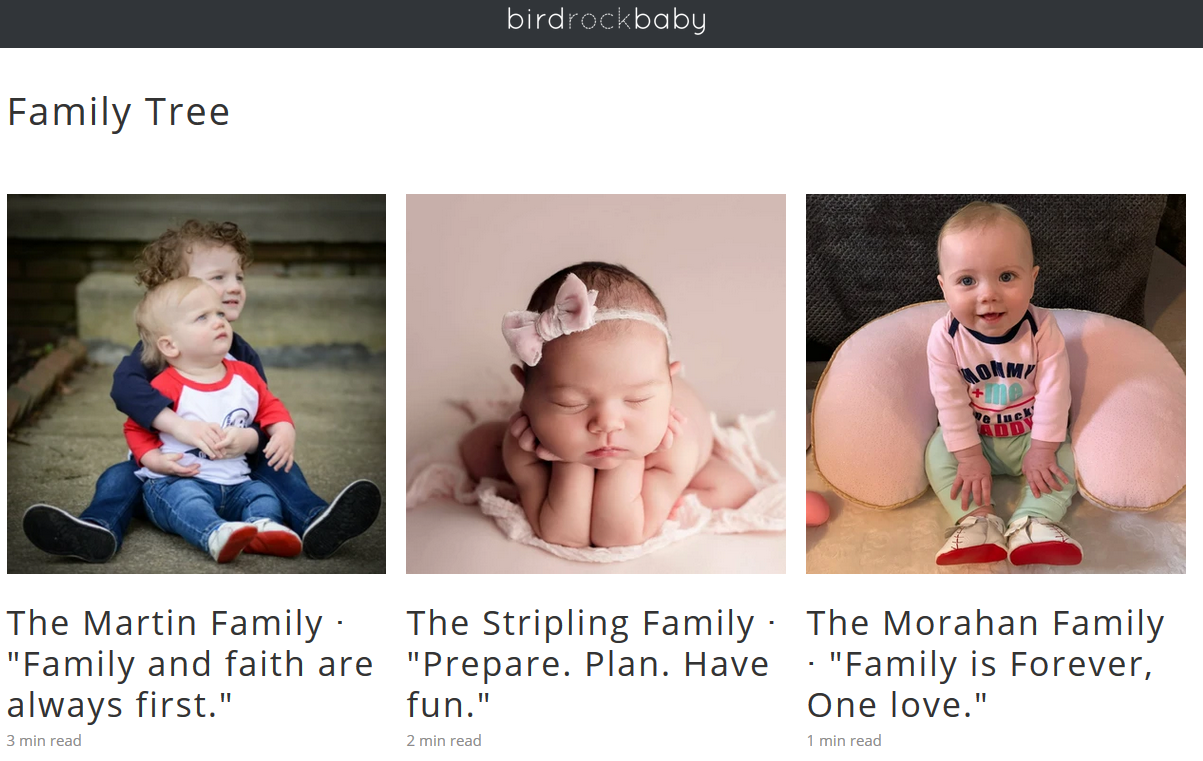
Caroline Podgurski, Chief Mom at BirdRock Baby, says this type of feedback is invaluable for the company.
“While getting to know our customers in this way isn’t directly tied into sales, it’s an incredible way to bond with and learn about our customer base,” says Podgurski. “It strengthens the connection between the customer and our brand — next time they need a new pair of baby shoes, they are likely to think of BirdRock Baby.”
2. Evaluate Your Ability to Meet Your Customers’ Needs
Once you understand what your customers actually want from you, you’ll also be able to gauge your ability to give it to them.
For one thing, you’ll be able to see what you’re doing right — and how well you’re doing it. From there, you can make even further improvements in these areas that will allow you to truly stand out from your competition.
Collecting customer feedback will also allow you to identify any weaknesses in your ability to serve your audience. After you identify the broad areas that need to be improved, you can then dig deeper into your feedback to determine specific changes that need to be made in order to best provide for your customers.
Again, this takes the guesswork out of the entire process. By listening to your customers, you’ll always know exactly what to do to improve your efforts — and can move forward efficiently and effectively.
3. Assess Customer Satisfaction, Loyalty and Evangelism
Analyzing customer feedback can also give you a good idea of how satisfied and engaged your customers are with your brand. This goes for both the short and the long term.
In the short term, you’re looking at customer satisfaction. Here, you’ll be gauging your individual customers’ levels of satisfaction regarding their most recent experience with your brand. Again, this will help you identify the specific strengths and weaknesses of your operations, allowing you to make laser-focused improvements in the future.
In assessing customer loyalty and referral potential, you’ll be gauging your ability to keep your customers engaged, satisfied and happy with your brand over time. Here, it’s not about any single experience or engagement — but more about your ability to consistently meet and exceed your customers’ expectations whenever they engage with your brand.
What’s more, you can also use this info to identify those who are most engaged with and loyal to your brand. In identifying your brand loyalists and evangelists — and any feedback they’ve provided you — you’ll be better equipped to make improvements to your processes that matter most to those who are most valuable to your company.
4. Strengthen Your Customer Relationships
Modern consumers want to be able to form authentic relationships with the brands they do business with.
Unfortunately, most brands fall quite short in actually allowing such relationships to bloom. Per the earlier HubSpot report, only 12% of consumers actually believe companies when they say they “put the customer first.”
By actively seeking out feedback from your customers regarding their experiences with your brand, you make clear that you care about their needs and are willing to do what needs to be done to better serve them.
To be sure, this is what consumers mean when they say they seek out brands that put their customers first.
Soliciting feedback from your audience also provides the opportunity for you to engage further with your individual customers as they wish. In diving deeper with those who wish to do so, you’ll inherently create a stronger bond with these individuals and can use the experience as a means of providing even more value to them.
5. Showcase Social Proof and User-Generated Content
You can also use the positive feedback you collect from your satisfied, loyal customers to attractnew customers to your brand.
In fact, the modern consumer actively seeks out such feedback and commentary as provided by your current audience base. Forty-four percent of consumers look to social proof during the buying process, according to HubSpot.
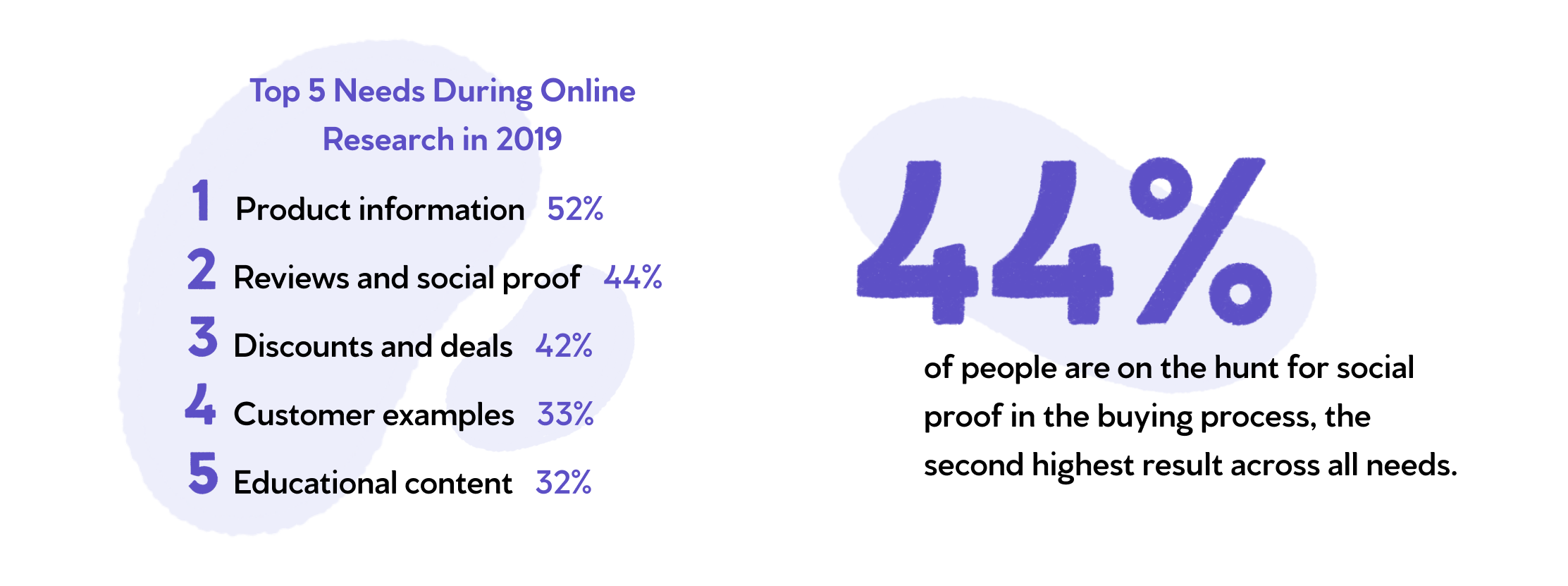
Another study found that 88% of consumers trust online reviews just as much as a personal recommendation from a friend. You can showcase customer feedback, product reviews and other user-generated content throughout your website and throughout your social media channels as well.
By showcasing the positive feedback you’ve collected from your current customers, you make it all the more likely that new prospects will land on your brand when it comes time to make a purchase.
6. Streamline the User Experience and Path to Purchase
Your customers should always be able to do what they came to your site to do — period.
Of course, a lot needs to go right for this to happen… and even the slightest bump along the customer’s path to purchase can jar them off course. AsInvespcro explains, poor navigability, lack of information, on-site technical glitches — and more — can be reason enough for a potential customer to leave your site for good.
With so much to keep track of, it can be difficult for teams to identify exactly where and why bottlenecks in the customer experience and sales funnel are occurring.
Again, customer feedback proves useful.
By soliciting feedback revolving around specific points of the customer journey, you can make laser-sharp improvements to your on-site experience — both functional and aesthetic. This will help you plug leaks in your funnel, and keep your customers on the path to conversion.
7. Spur Massive Business Growth
Everything we’ve said so far will inevitably lead to massive growth for your business.
As we just said, simply highlighting positive customer feedback and user reviews can generate additional sales for your brand. In 2017, Spiegel Research Center found that showcasing user reviews can lead to a 270% increase in conversion rates. On top of that, the average consumer also spends 31% more when engaging with brands that present user reviews.
But, let’s not forget about the big picture.
Overall, you’ll have a much clearer idea of what your customers want, and you’ll have figured out the most effective and efficient way to give it to them. In continuously improving the value you provide your customers, you’ll keep them engaged with your brand for a long time to come.
If you can always keep your customers coming back for more… well, there’s little doubt that you’ll continue to experience massive gains for your business.
How to Effectively Collect Customer Feedback
We know just how important it is to collect feedback from your customers. Now, the question is:
What, exactly, goes into the process of collecting it?
We’ll walk you through the process in five steps.
1. Seek Out Existing Feedback
Unless your company is completely new, your customers have probably already provided a ton of feedback about their experiences with your brand.
Of course, this feedback doesn’t do you any good until you uncover it.
For starters, take a look at the engagements you’ve had with your customers in the past, for any reason. Chances are, your customers have made comments, asked questions and otherwise made their thoughts clear when talking with your team.
Even just on the surface, these comments can provide a ton of insight into your customers’ needs and expectations. Looking at the overall context in which such feedback was given allows you to gather even more insight into how your team can improve moving forward.
For example, say a customer asks if you accept PayPal as a payment method. On the surface, this may be a sign that you should look into accepting payments from PayPal. After uncovering similar comments from other customers, you may realize that adding even more payment options will lead to fewer abandoned carts and an overall better conversion rate.
You also want to look for any mentions of your brand online, as well. From social media channels to special interest forums, there are a number of places your customers are likely talking about your brand and sharing their experiences with others in their network. Social media monitoring tools like Mention will alert you whenever your brand is being talked about on the web.
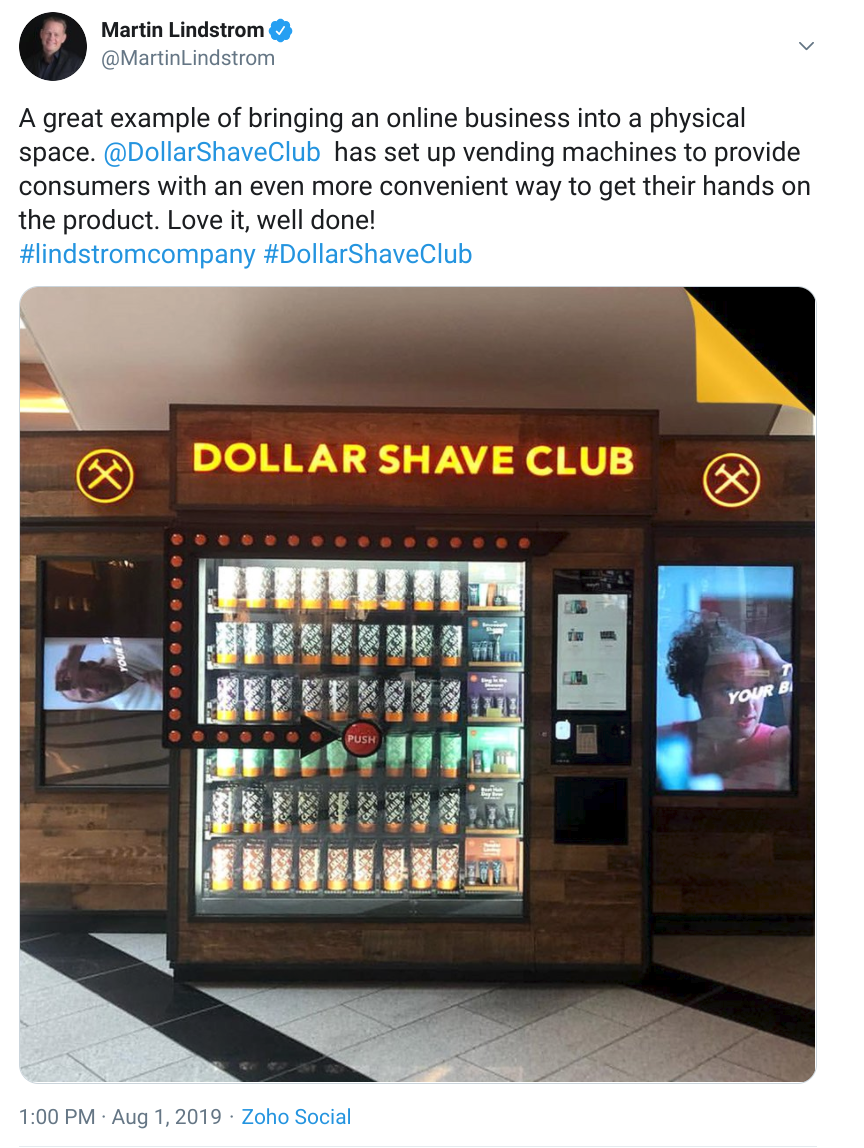
The point is, just because you didn’t formally ask for or receive feedback from your customers doesn’t mean it’s not “out there” for you to listen to. Though the rest of this article will focus on how to effectively solicit feedback, you should always keep your eyes open for any information your customers volunteer of their own free will.
2. Use the Optimal Channel and Format
As we’ve alluded to, your customers can use a variety of channels to provide feedback to your team. And, depending on the circumstances, this feedback can come in many different formats.
When soliciting feedback from your customers, it’s crucial that you do so using the best possible channel and format for the task at hand.
There are a number of factors to consider here, such as:
- Where/how the last engagement with the customer took place
- Whether you’re looking for quick-hitting info or more long-form feedback
- The customer’s preferred channel for content delivery and user engagement
For example, you might ask those who use your site’s live chat or chatbot feature to fill out a quick survey directly in the chat box:
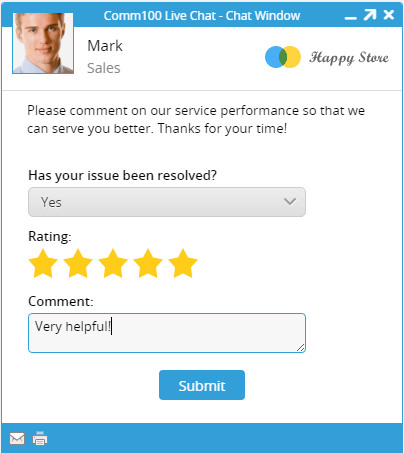
If you’re looking for additional feedback from those who complete the quick survey, you may then point them to a page on your website or ask them for permission to send a survey via email.
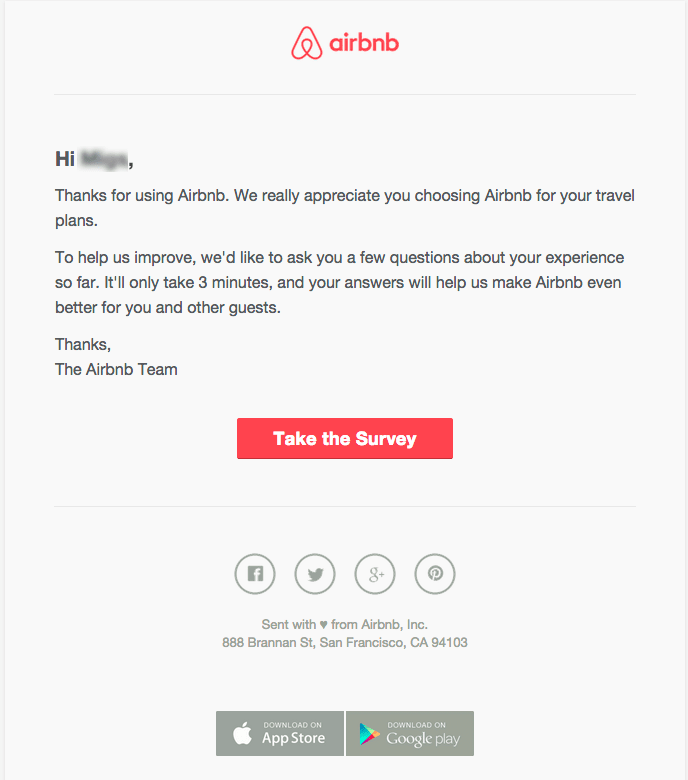
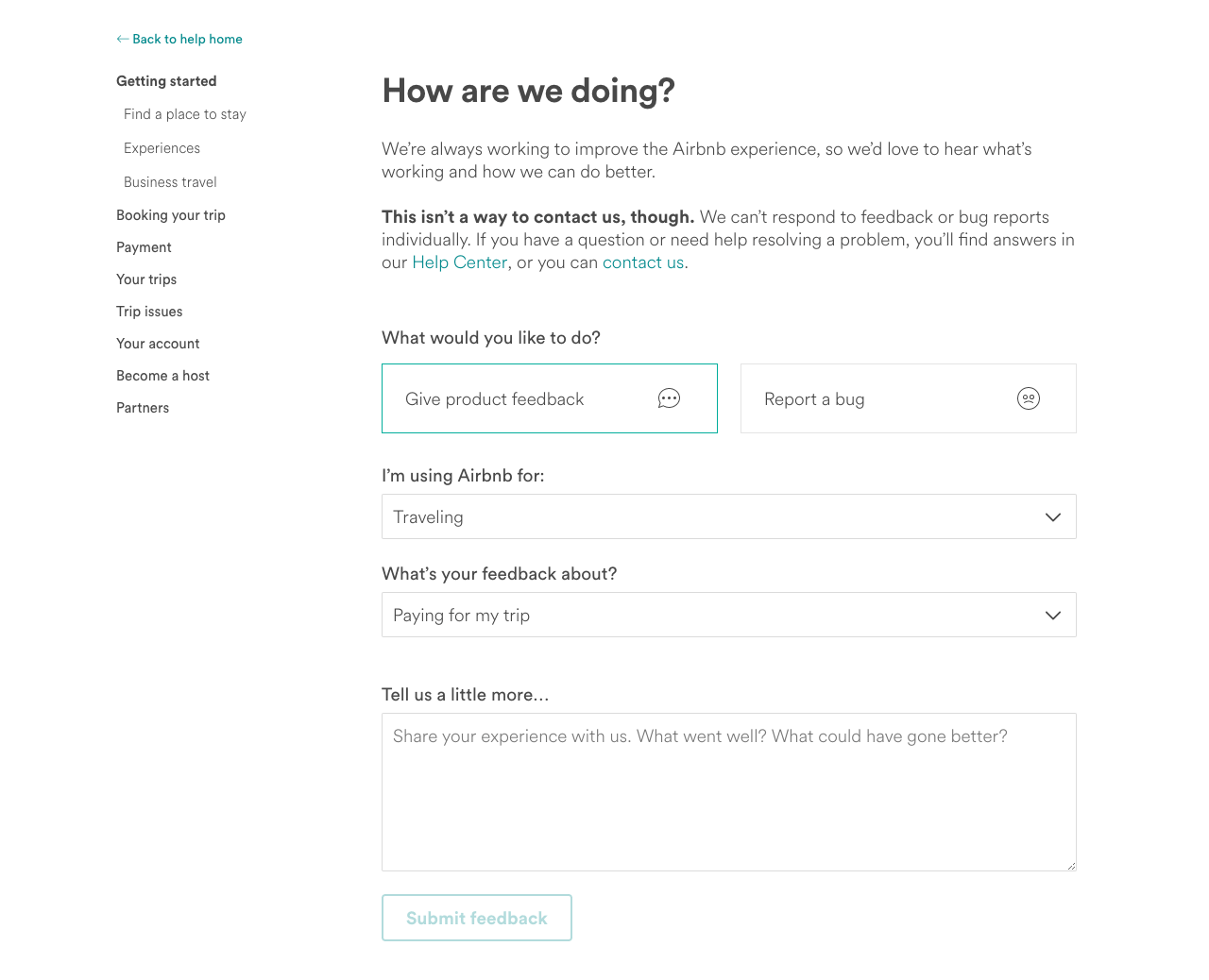
You can also solicit feedback from your entire audience in one fell swoop by making the ask on your social media pages or on other third-party forums.
Again, use the channel and format that will best allow you to collect the information you’re looking for. If you need to ask a quick question, you might just need to poll your audience on Twitter:
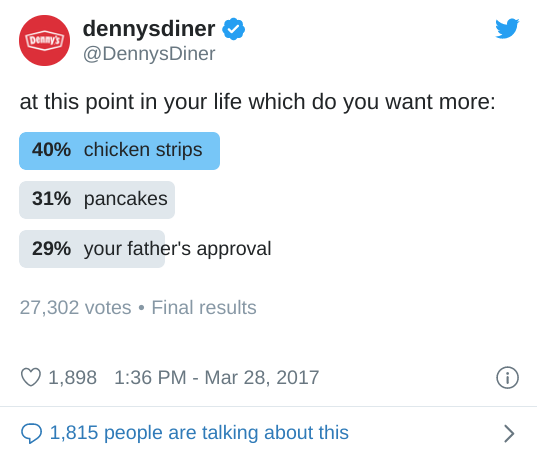
Or, if looking for long-form, open-ended feedback, you might head to Reddit or a similar special interest forum.

Using the right channel and format when soliciting feedback serves two key purposes:
- For one, it provides accessibility across the board. In turn, your audience will not only be more likely to see your invitation to provide feedback in the first place, they’ll also be more likely to provide it.
- Secondly, the responses you receive will be more likely to provide the information and insight you’ve been seeking. In contrast, using the wrong format or channel may cause your respondents to unwittingly leave out important information — decreasing the value of their response, overall.
Customer feedback comes in many shapes and sizes. Before asking your customers to give their two cents on a given topic, make sure you ask them on the right channel, and allow them to respond in the most effective way possible.
3. Value Your Customers’ Time
Generally speaking, your customers aren’t going to want to spend too much of their time giving feedback to your team.
Sure, in some cases — often involving your most loyal and raving fans — they’ll be happy to fill out a long-form survey, engage in a one-on-one interview or otherwise dive deeper into their experience with your brand.
But, these instances will likely be few and far between.
For the most part, your customers are going to want to quickly answer whatever questions you have for them so they move on with the rest of their day.
That said, it’s essential that you aim for efficiency across the board when soliciting feedback from your audience.
This means:
- Asking concise, focused and easy-to-understand questions
- Eliminating redundant or superfluous questions that won’t lead to greater insight
- Making it technically easy for customers to submit their responses
Your goal is to squeeze as much information out of your customers as you can in as little time as possible. Value your customers’ time, and you’ll have a much better chance of collecting the feedback you’re looking for.
4. Make the Ask at the Right Time
When it comes to soliciting feedback from your customers, timing is everything.
The reason for this is twofold:
- Requesting feedback at the right time increases the chances that the customer will actually respond. Conversely, asking at the wrong time (i.e., when the customer isn’t very active) will likely cause your request to go ignored.
- Timing your request right will allow you to generate more — and more valuable — information than were you to ask at a less-opportune moment.
(This may be because the information is fresh in your respondent’s head, or it may be because they have more time to speak about their experience with your brand. In both cases, you’ll be getting better info than you would have otherwise.)
Depending on the situation, there are a few different ways to approach this notion of timing your ask right. In some cases, you’ll time your ask based on a customer’s specific actions.
If, for example, you’re looking for feedback regarding a customer’s recent purchasing experience with your brand, you’d want to reach out to them almost immediately with a post-purchase survey. Again, because the experience will still be fresh, the customer will likely be able to paint a much clearer picture of their point of view.
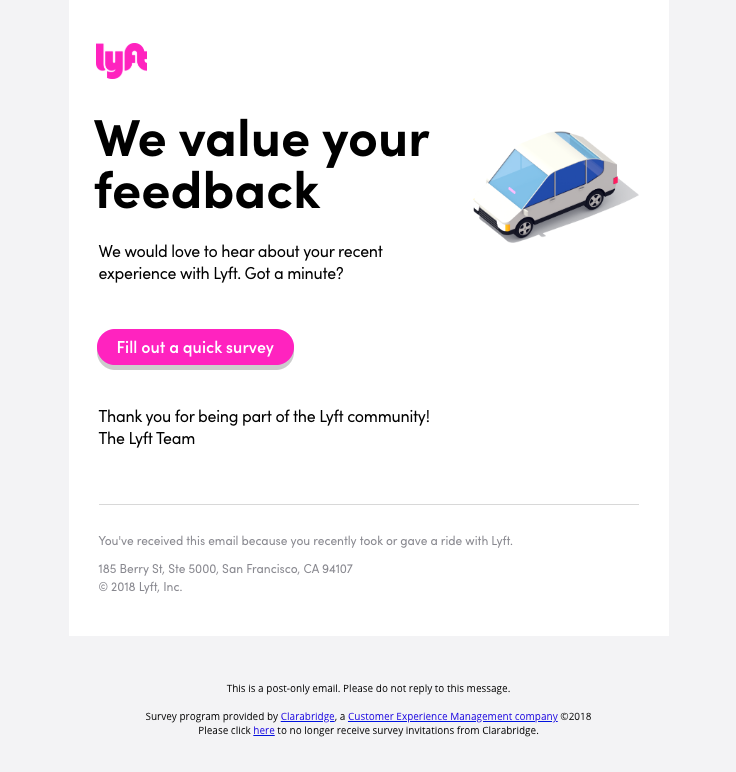
You also want to solicit feedback from customers once they reach certain milestones with your brand. For example:
- When a customer accomplishes a certain task
- Once they attain a personal goal
- After they’ve been with your company for a certain period of time
In such cases, you’ll want to use these landmark moments as an opportunity to gain insight into their experiences thus far — and will want to gather this insight as soon as possible. At other times, you might want to delay the ask to allow your customer to formulate a more informed and cohesive opinion of the topic at hand.
For example, if a customer buys a product from your store, you’ll want to give them ample time to actually use it before you ask them about their experience with it. So, you might send out a customer satisfaction survey or feedback form a number of days or weeks after a customer makes a purchase — however long it typically takes your customers to extract value from your product.

Timing is also important when sending out blast requests for feedback to your entire audience. Here, you’ll want to schedule your social media post or email to be sent when your customers are most likely to see it (i.e., when they’re typically most active on the platform you’re using).
Get your timing down, and you’re bound to see an increase in the quantity and quality of customer feedback you receive.
5. Ask the Right Questions — and Know When to Dive Deeper
We talked a bit about this earlier, but it’s worth reiterating:
The key to generating useful, valuable feedback from your customers is to ask the right questions in the right situations.
If you’re looking for some initial feedback based on a customer’s recent experience, you might ask them to simply rate the experience on a numbered scale — along with the option to leave a short-form comment or explanation of their response.

More often than not, this is the extent of what you’ll get from your customers.
And, believe it or not, that’s OK. In some cases — such as with inexperienced or low-value customers — you might not want to collect too much feedback from them, as their experiences may not be representative of your customer base as a whole. Or, their lack of experience may lead them to provide feedback that’s largely inaccurate and misleading.
At any rate, most of your customers will only fill out this quick form — if they even do that.
But: There will be those who are willing to dive a bit deeper and provide more info to your team.
For these individuals, you have two goals:
First, you need to identify any sign or trigger that makes clear a customer wants to give you more info. Sometimes, this will be as obvious as them volunteering to do so or filling out optional forms within your survey. Other times, you may need to look into the individual customer’s engagement history to gauge whether or not they’ll be willing to dig deeper.
Once you know who you’ll be targeting for more in-depth feedback, you need to ensure you ask the right questions to elicit the insight you’re looking for. This is also important if planning to use the customer’s feedback for the purpose of social proof.
To illustrate this point, think of the differences between, say, a case study, a product review and a user-generated social media post. Now, think of how differently you’ll need to approach your customers as you go about creating each of these types of content.
The point is, on top of soliciting feedback from your customers, you also need to guide them to ensure their feedback is useful and valuable to your company.Focus their attention on the key topics you want them to speak about, and they’ll be much better equipped to provide the information you’re looking for.
Go Straight to the Source
It can’t be stressed enough: Collecting the right customer feedback can be so helpful for your store.
You get to gain accurate and reliable insight into customers’ expectations of your brandand your ability to provide for their needs. This, in turn, allows you to make sound business decisions based specifically on what your customers have told you they want from you.
Armed with this information, you’ll be leaps and bounds above your competitors who choose to leave this information in the void.

Josh Brown
Josh Brown is part of the marketing team at Helpjuice, which provides easy-to-use knowledge base software that guarantees fewer support emails and more happy customers. Prior to working at Helpjuice, Josh has worked for several ecommerce companies and has written for BigCommerce, MarketingProfs, Marketo and other well-known publications.



